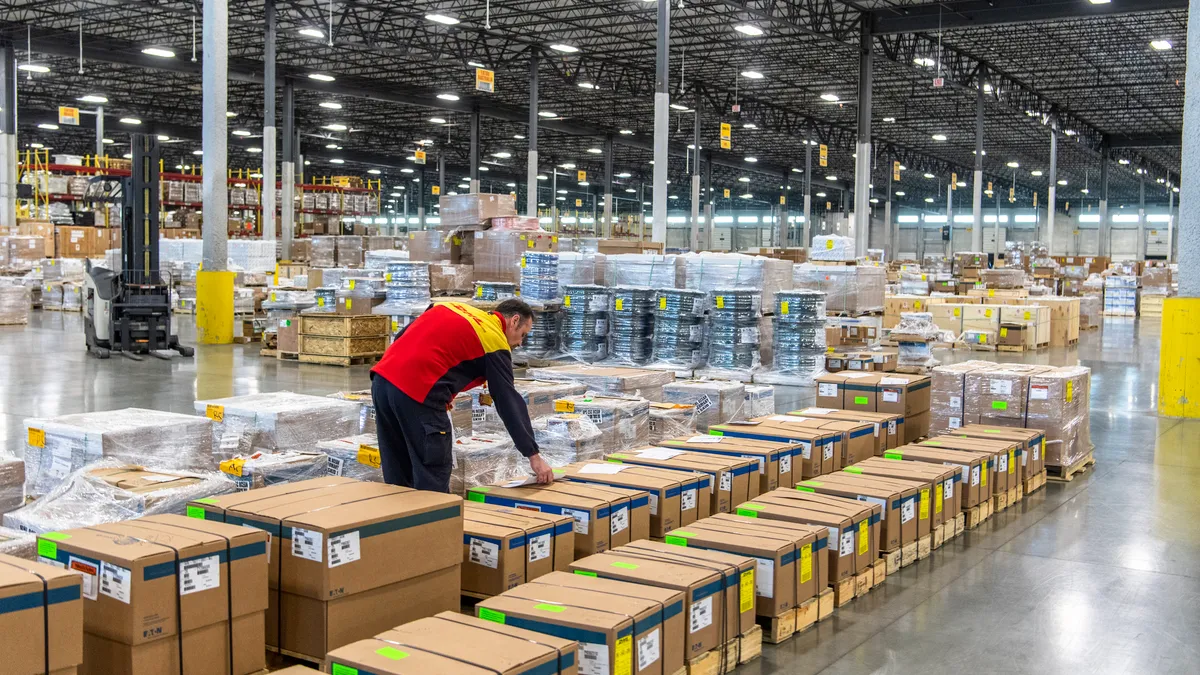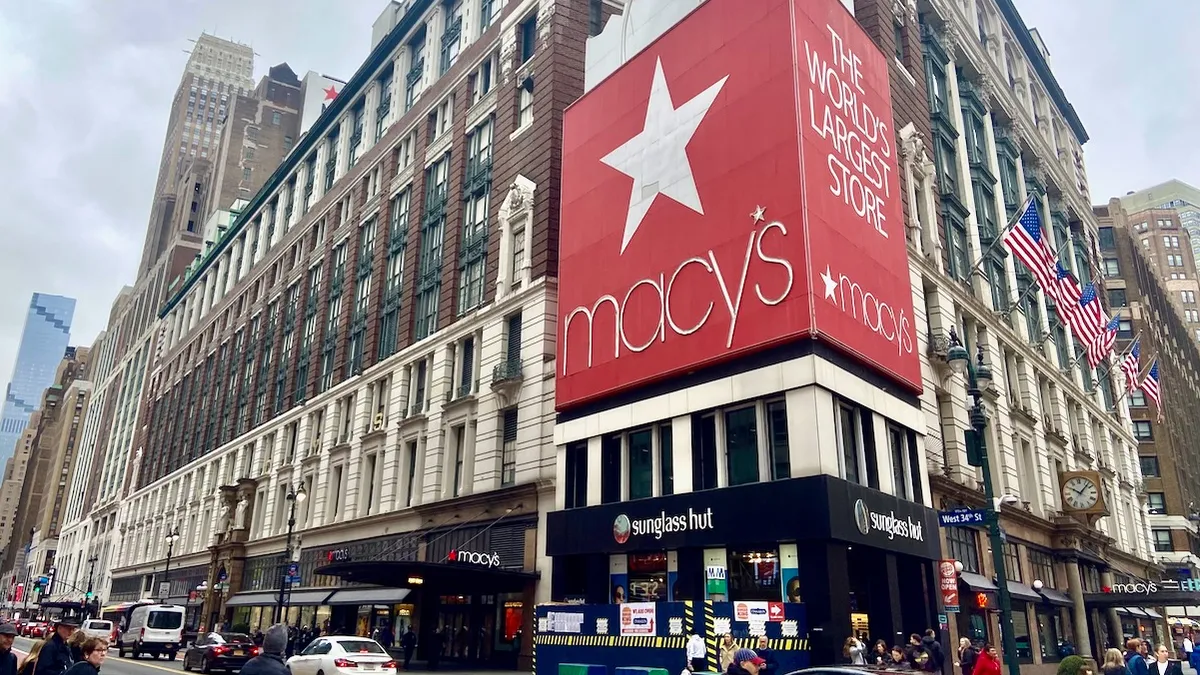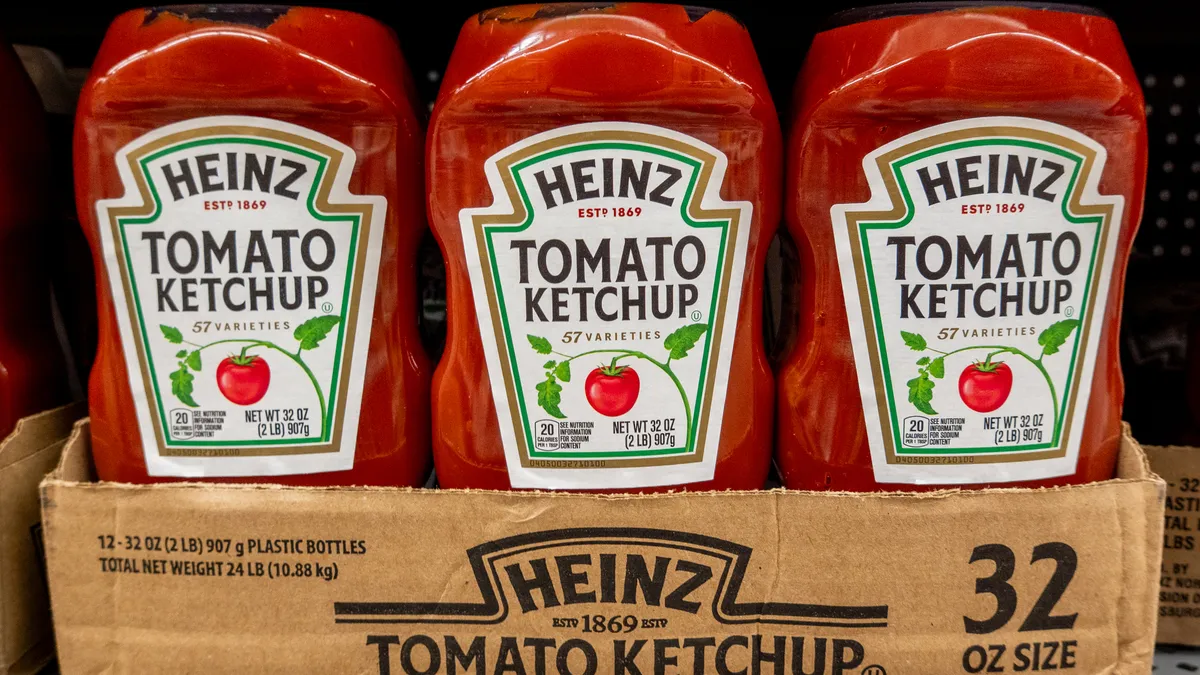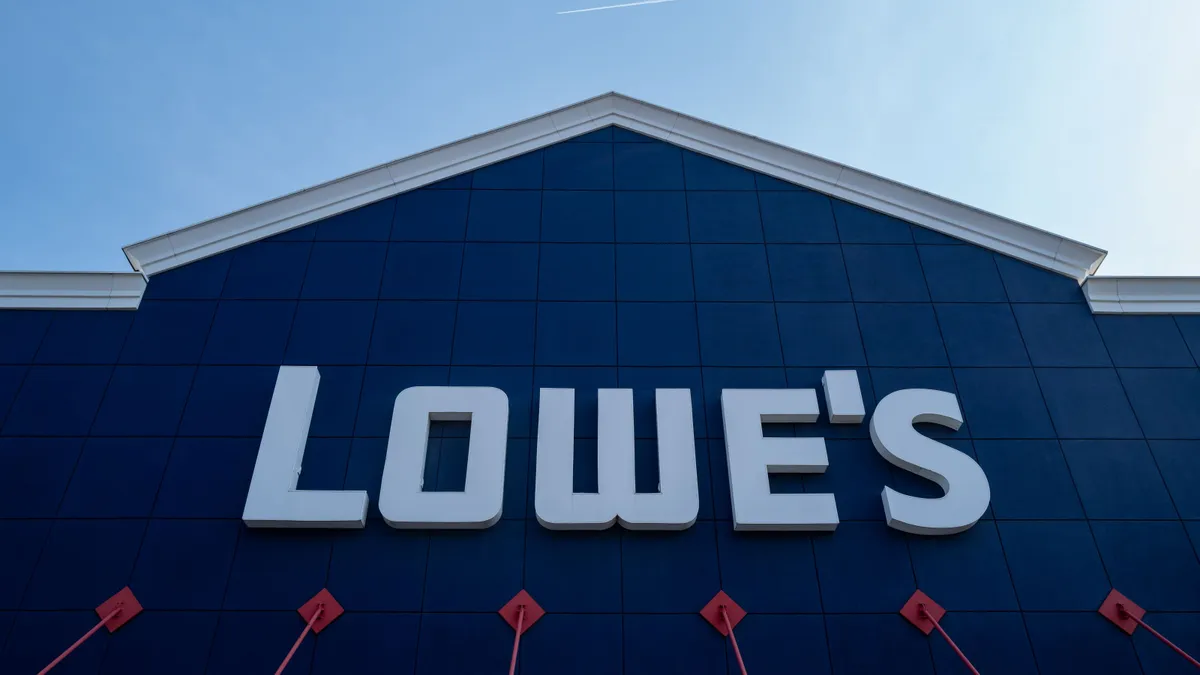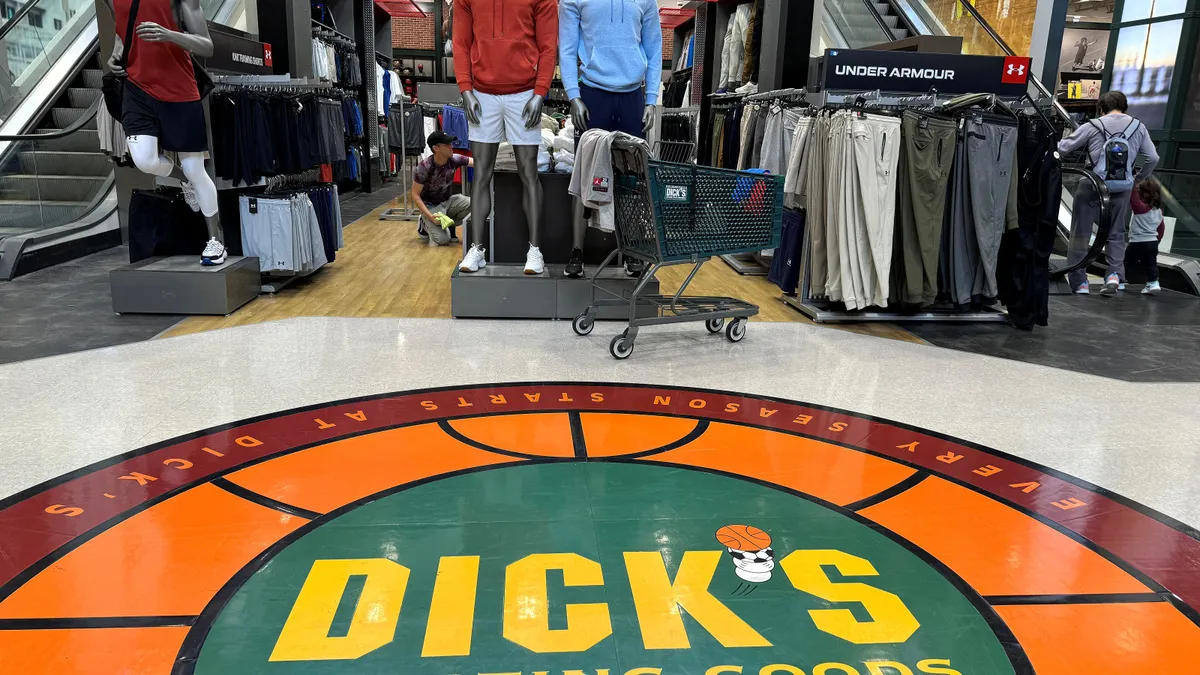When DHL decided to upgrade its 434,000-square-foot cold storage facility at Chicago O’Hare International Airport, the company had an eye not just on maintaining temperatures inside the facility, but making sure those temperatures held at all parts of the delivery cycle.
DHL has deployed new technology (and older technology used in new, more pervasive ways) that’s becoming commonplace across cold chain warehouses, whether it’s tracking temperatures when importing and exporting for life science companies, as DHL does at this location, or making sure the ice cream in your Instacart order stays cold until it reaches your front door.
The power of RFID in a cold chain environment
Passive and active RFID aren’t new technologies, but they’ve both come so far down in price and increased so much in functionality that they are more practical in more places, John Bruno, vice president of product management at Elastic Path, told Supply Chain Dive in an interview.
RFID can do everything from track equipment performance to keep an eye on locations of items in the warehouse. The technology can help with energy efficiency too, because no one needs to open items or coolers to check the conditions is inside. "You don’t have to open and shut these things and deregulate temperatures," Bruno said.
"We can tell exactly where that piece of freight is at any time."

Phil Steffen
Global Commercial Head, DHL Same Day Delivery
That’s the case in the upgraded DHL warehouse, which uses RFID readers throughout the building and RFID-enabled labels on every shipment. DHL’s customers can know the exact location of everything "that comes into the building, whether it’s on its way as an import or on its way out as an export," Phil Steffen, global commercial head of DHL Same Day Delivery, told Supply Chain Dive in an interview. "We can tell exactly where that piece of freight is at any time."
DHL has also made the warehouse the hub for keeping track of shipments by using near-field communication data to deploy data loggers that record temperatures throughout the delivery cycle. DHL puts a pouch with a DHL Smart Sensor on the outside of the shipment that allows customers to track temperature, humidity, shocks, brightness and location from the warehouse to arrival at its end location.
"Our customers are able to see very quickly what temperature exposure their shipment had," Steffen said, so they can know if those temperatures exceeded the packaging’s temperature rating, and DHL can step in and mitigate the situation. Then through technology customers put inside their shipments, they can tell if their product stayed within the range of appropriate temperatures via a web portal.
RFID is also ideal for sub-zero cold chain warehouses where scanners can fog up. RFID systems can create a "scanless environment," John Sidell, managing principal of the New Course Group, told Supply Chain Dive in an interview.
Automation improvements – and limits
New technology is also cutting down the time required to move items in a warehouse, which is helpful for employees working in those environments, especially sub-zero warehouses. "Working in a warehouse is hard. Working in a cold warehouse is even harder," said Sidell. Given the current warehouse labor crunch, automation can mean fewer workers exposed to that level of cold, allowing talent to be deployed in better working conditions.
One type of automation used in the DHL facility is a dimensionalizer. It "allows us to limit the time a person would have to physically measure a shipment," said Steffen. The dimensionalizer weighs the item and, via laser, scans to measure it without requiring a tape measure. This happens after the item is on a forklift.
Sidell said extreme cold temperatures limit what can be automated. "Things break quicker when they’re frozen solid," he said, especially with small moving parts. "You get a drop of moisture that freezes the wrong thing and everything’s broken."
Sidell also said gloves used by lift operators either must be taken off, or terminal keypads must have XL buttons and keys so they can use them with the gloves on. There also can be slick conditions due to moisture freezing. "One of the issues with a conveyor in a cold warehouse is that cartons and cases will slide down an incline and cause jams or injury," he said.
The e-commerce rush comes to the grocery store
Sidell doesn’t see areas that use cold warehouses, like grocery or floral, being as impacted by e-commerce as other areas of retail right now, but "it’s coming. How do I fulfill frozen orders in a one-day period of time?"
Bruno said more localized cold chain is still being figured out – citing things like Uber Eats and Instacart as forcing restaurants and grocery stores to rethink how they use their in-store footprint. "Increasingly, those same kinds of industrial refrigerators and freezers are being placed not in the stock rooms but in plain view of customers," he said. They need to "facilitate the role of one of these cold chain warehouses" in front of people already in the store.
"Working in a warehouse is hard. Working in a cold warehouse is even harder."

John Sidell
Managing Principal, New Course Group
The same RFID technology applies here, allowing Instacart delivery people to know exactly where the orders they need to pick up are, without having to constantly open and close the refrigerator doors, which cuts down on how much time it takes from order to delivery, and saves money and energy in the process.
This story was first published in our weekly newsletter, Supply Chain Dive: Operations. Sign up here.
Correction: An earlier version of this story misstated John Bruno's title.


